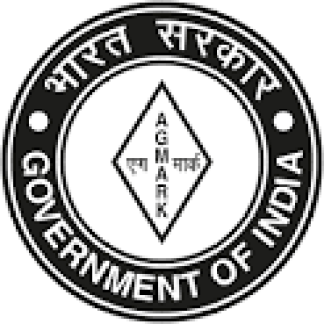The full form of AGMARK is Agriculture Marketing. AGMARK is a certification mark to confirm the grading standard of agricultural commodities. It was started in 1937 by the Indian Government also called Agricultural Produce (Grading and Marking) Act and then amended in 1986 to add more goods. In India, there are 222 (up to 2022) agricultural products that have been certified by AGMARK.

AGMARK Full Form
AGMARK stands for Agriculture Marketing. It is the certification mark that guarantees the quality of agricultural products in India. The standards of AGMARK are based on the Food Safety and Standards Act, 2006 (FSSAI Act 2006). AGMARK is provided by the Directorate of Marketing and Inspection, Government of India for agricultural products. Let us look at some of the objectives of AGMARK that are mentioned below.
- The main objective of AGMARK is to provide quality and unadulterated agricultural products to consumers.
- This grading system is used for both domestic and international purposes.
- Products such as cereals, oilseeds, vegetable oils, honey, butter, besan, atta, fruits, vegetable, etc. are covered under AGMARK certification.
- The standards used for AGMARK are used to differentiate between quality and 2-3 grades are prescribed for each commodity.
- Up to the year 2022, a total of 222 agricultural commodities have been notified that are to be certified as AGMARK products.
Objective of AGMARK Grading Scheme
The main objective is to provide consumers with quality, unadulterated products. The grading can be used for both domestic and export purposes
Features of AGMARK
- This is issued by the Directorate of Marketing and Inspection, under the Ministry of Agriculture and Farmers Welfare, of the Government of India for agricultural products.
- It covers quality guidelines for more than 200 different commodities ranging from pulses to cereals, from essential oils to semi-processed food like vermicelli.
- The head office is in Faridabad.
- The central AGMARK Laboratory is in Nagpur and 11 state owned AGMARK labs are found in 11 nodal cities.
- It is legally enforceable as per the Agricultural Produce (Grading and Marking) Act of 1937 (amended in 1986).
- The application processes are done online via the platform created by the National Informatic Centre (NIC).
- The standards for AGMARK are framed based on the Food Safety and Standards Act, 2006, the Codex Alimentarius Commission, and the International Organisation for Standardization.
- AGMARK certification is voluntary except for edible vegetable oils and fat spread which is mandatory as per FSSAI Regulations, 2006.
Benefits of AGMARK
- Farmers are befitted as the state offers more subsidies to those products that carry the mark.
- Marketing of the product finds a boost.
- The quality of the product is sustained by virtue of statutory compliances.
Difference Between FSSAI and AGMARK
- The FSSAI mark is compulsory whereas, AGMARK is a voluntary certification.
- FSSAI licensing covers all processes of food packing and every food item, agrarian or not. AGMARK, on the other hand, is meant exclusively for agricultural products.
- FSSAI licensing comes under the Food Safety and Standard Act, 2006, but AGMARK comes under the Agriculture Produce (Grading and Marketing) Act of India, 1937.
Process for Agmark certification
- A farmer who wants to get the certification should have the necessary infrastructure to process the products for Agmark grading. And also should have an approved laboratory for grading.
- The Chemist who has approved tests all the raw materials and the processed food products before the packing is done in suitable packing material or containers.
- The officers of Directorate of Marketing and Inspection (DMI) will have a regular check on the samples from the packers and market.
- All the samples which have undergone the test will be analysed in Regional Agmark Laboratories (https://dmi.gov.in/Documents/ActivitiesCAL.pdf).
- The product will be rejected if it does not meet the prescribed standards.
Application process
- Sign In/Register: New User must register with the email Id, mobile number, address, Aadhaar ID, and photo id. There will be a primary and secondary user id and password generated. https://agmarkonline.dmi.gov.in/DMI/customers/register_customer
- After registration, an applicant must:
- Click on the certificate of Authorisation to apply for Agmark certification on the commodities for manufacturing/packing premises.
- Click on the Certificate of Printing permission to apply for printing permission of the Agmark grading copy which is previously certified.
- Click on Certificate of Approval of Laboratory to apply for the approval of the laboratory to grade the agricultural products under Agmark for domestic trade.
- Filling the Form: The applicant must use the secondary user id and password to sign in and access the online application form to fill in all the proposed unit. All the manufacturing units and packing units must apply online to get a Certificate of Authorization (CA). The applicant must upload all the necessary documents in PDF
- Verification and Approval: The final procedure is the verification process and after which the commodity will be approved for getting the Agmark grade.
FAQs
What is the Agmark Grading Scheme?
The Agmark Grading Scheme is a certification program by the Government of India that ensures the quality and safety of agricultural products. It is managed by the Directorate of Marketing and Inspection (DMI) and provides a quality standard mark for various food products.
What products are covered under the Agmark Grading Scheme?
The Agmark Grading Scheme covers a range of agricultural products, including grains, pulses, oilseeds, and processed foods. It helps in maintaining quality standards and ensuring consumer protection.
